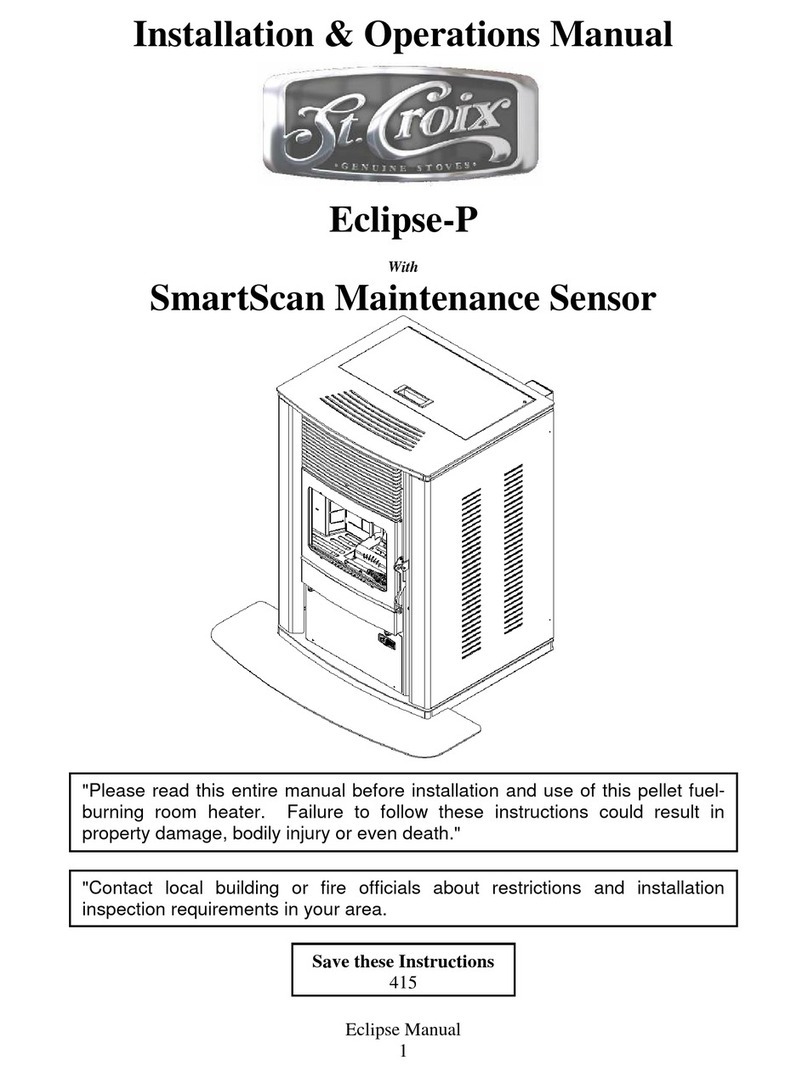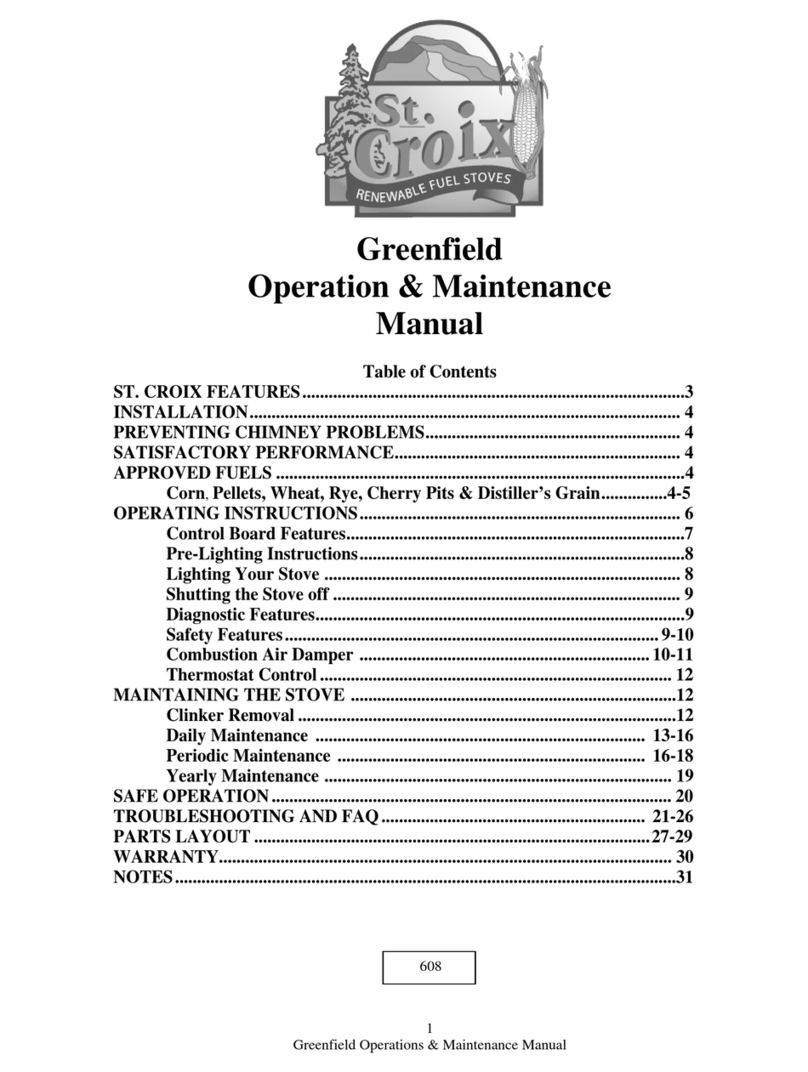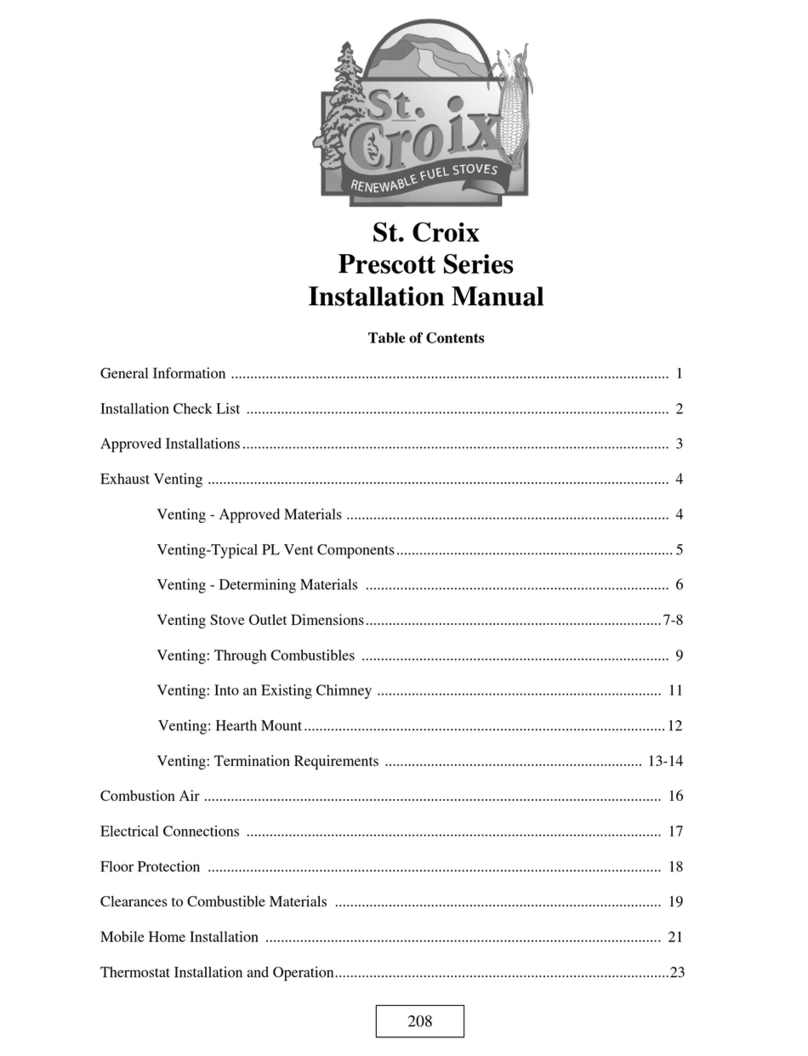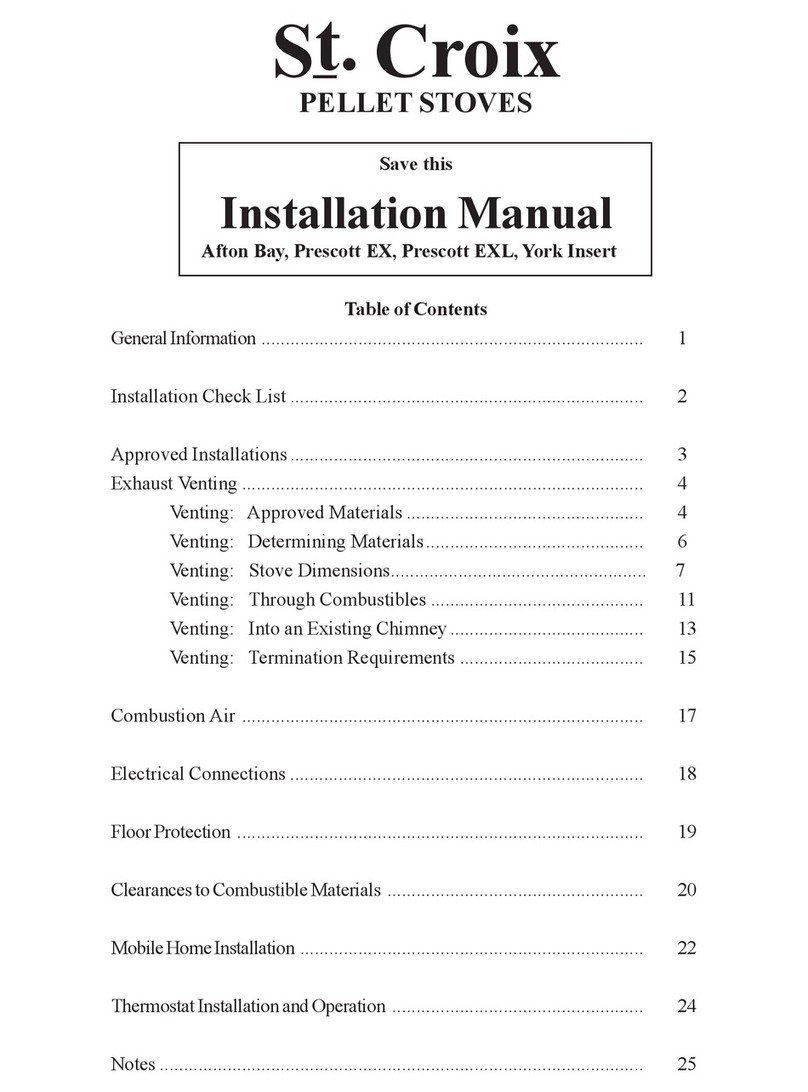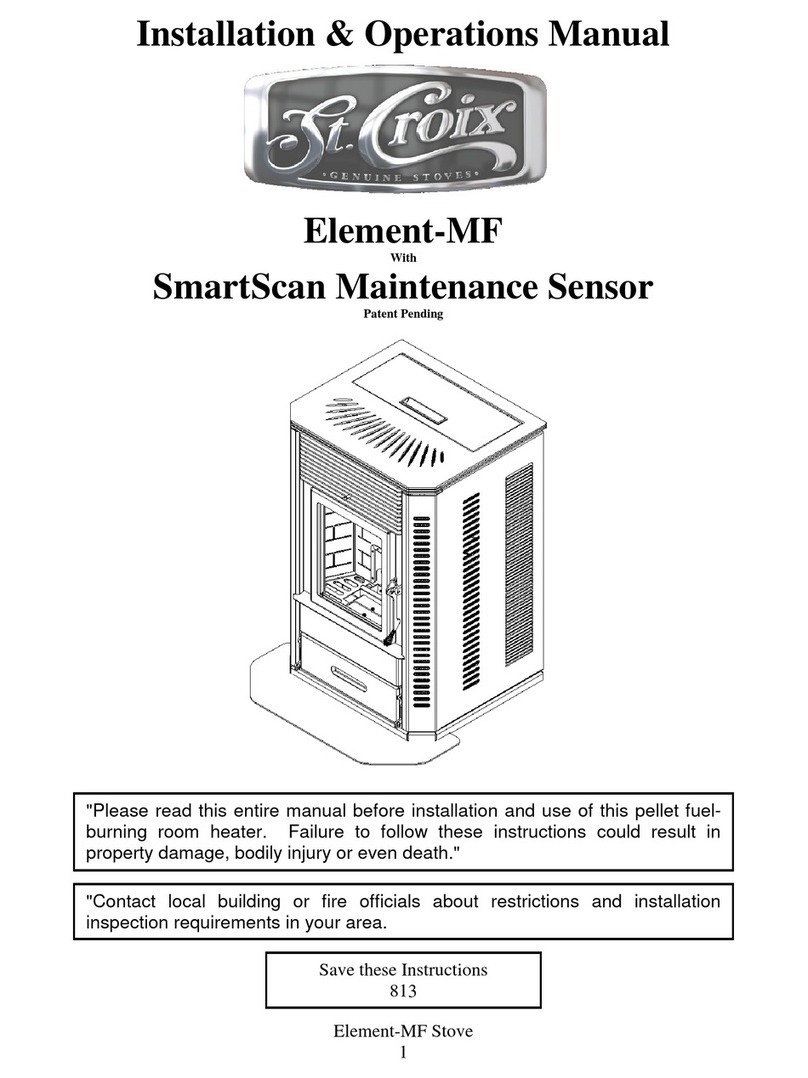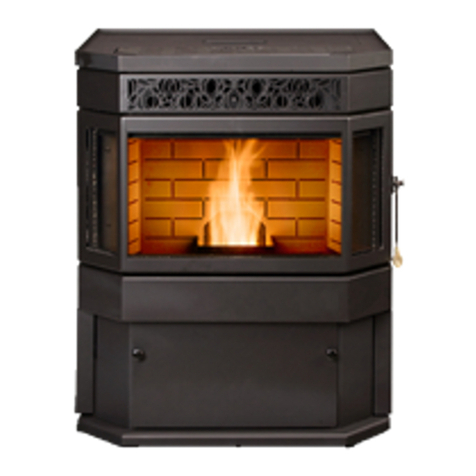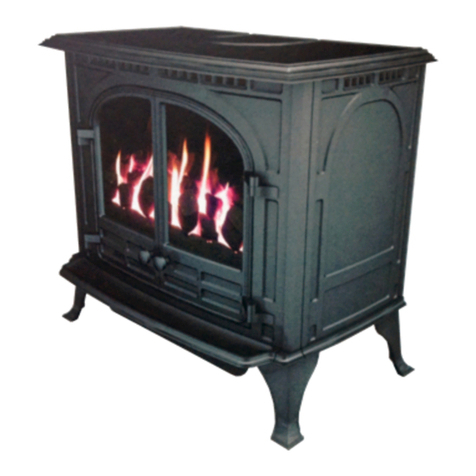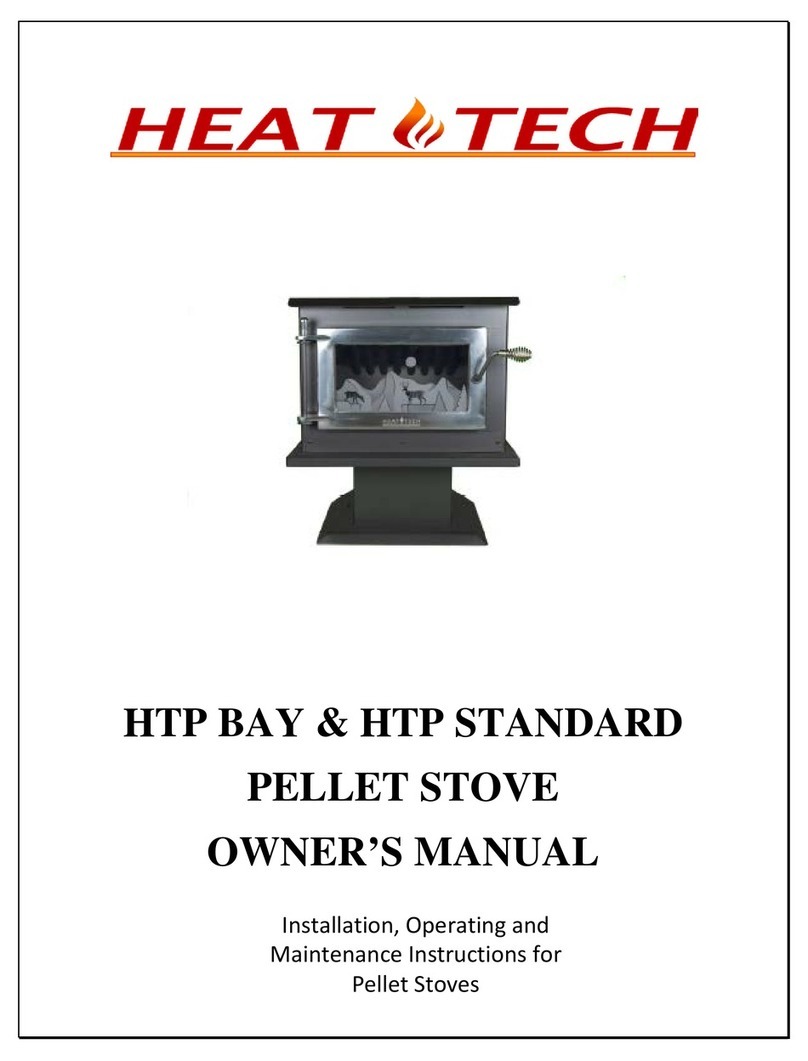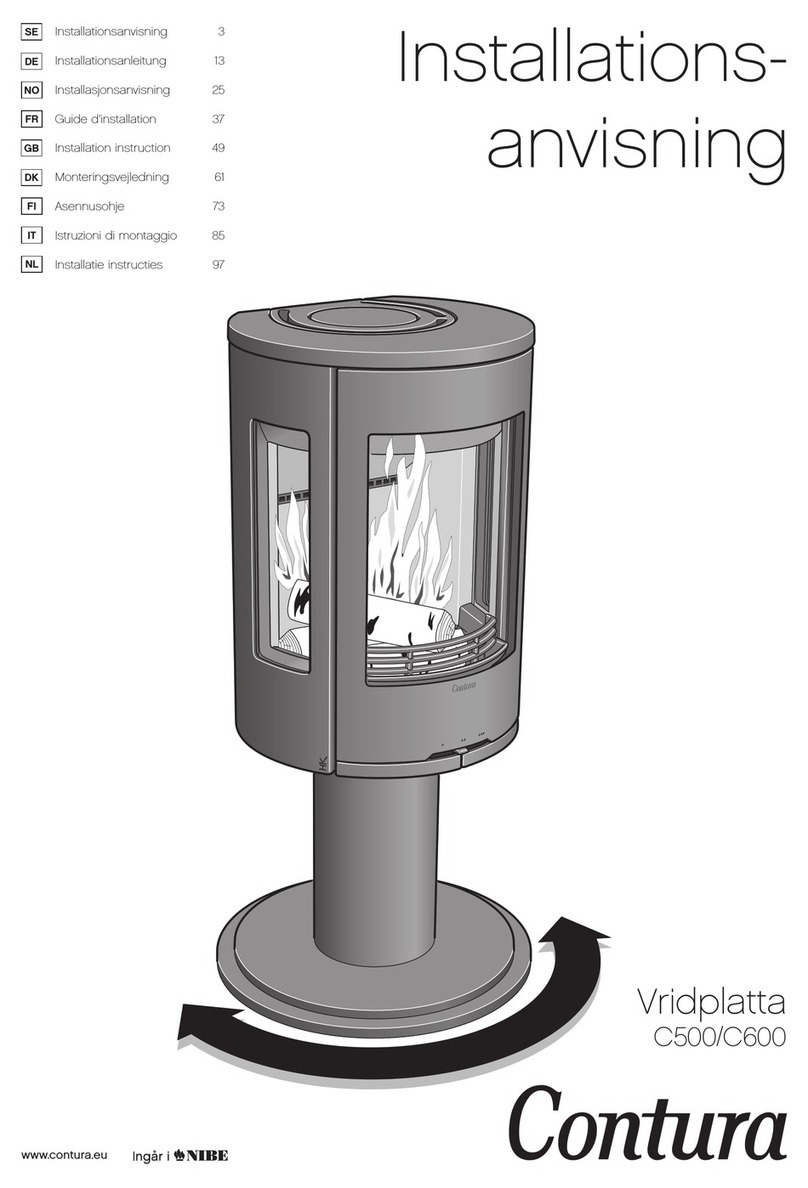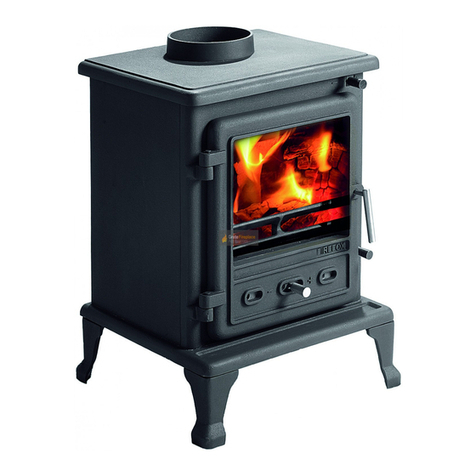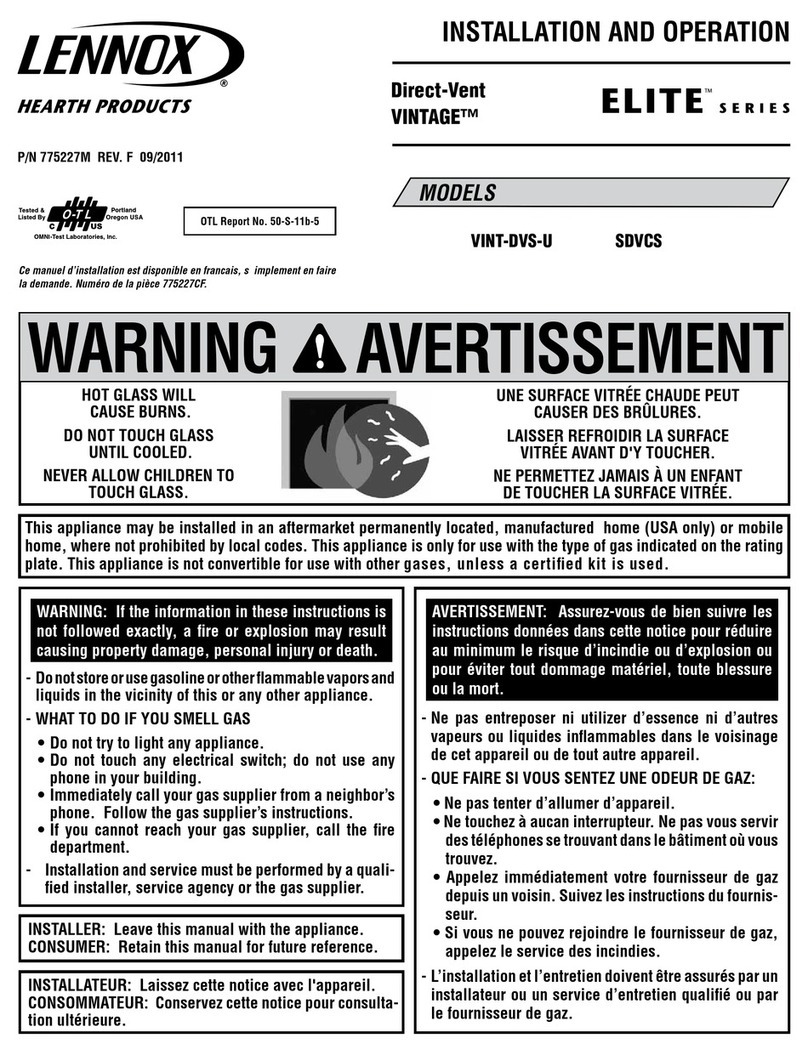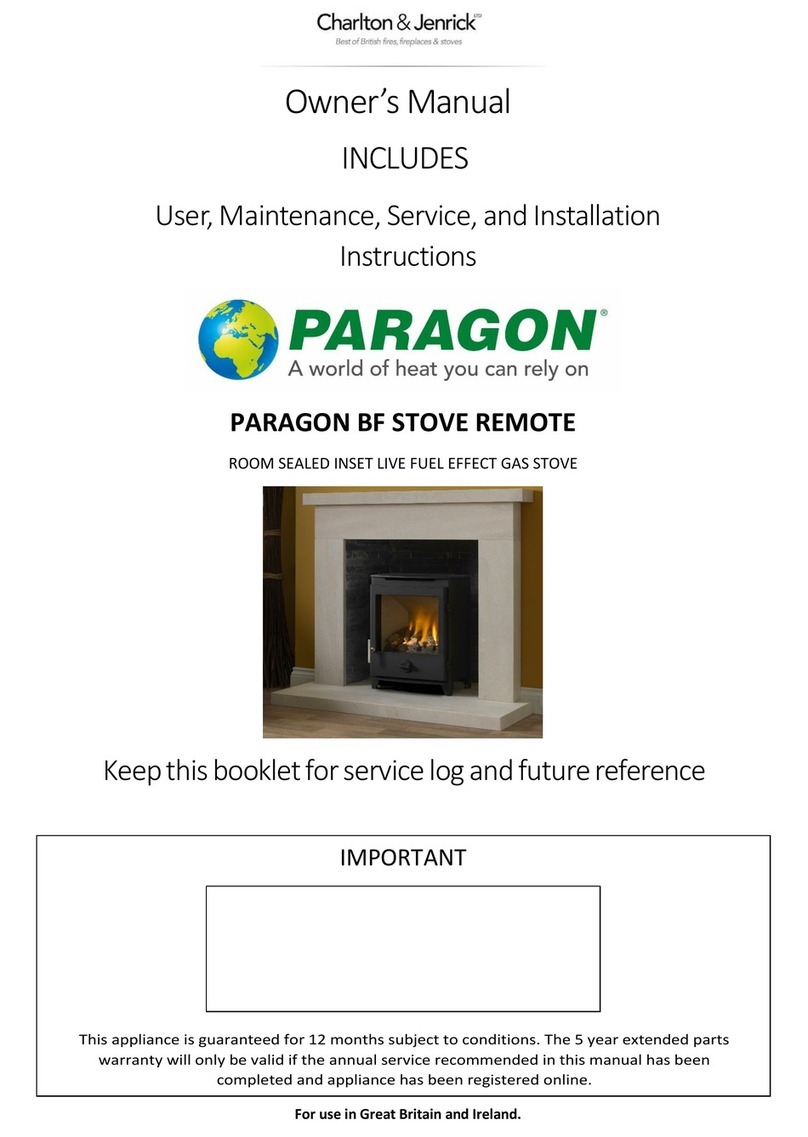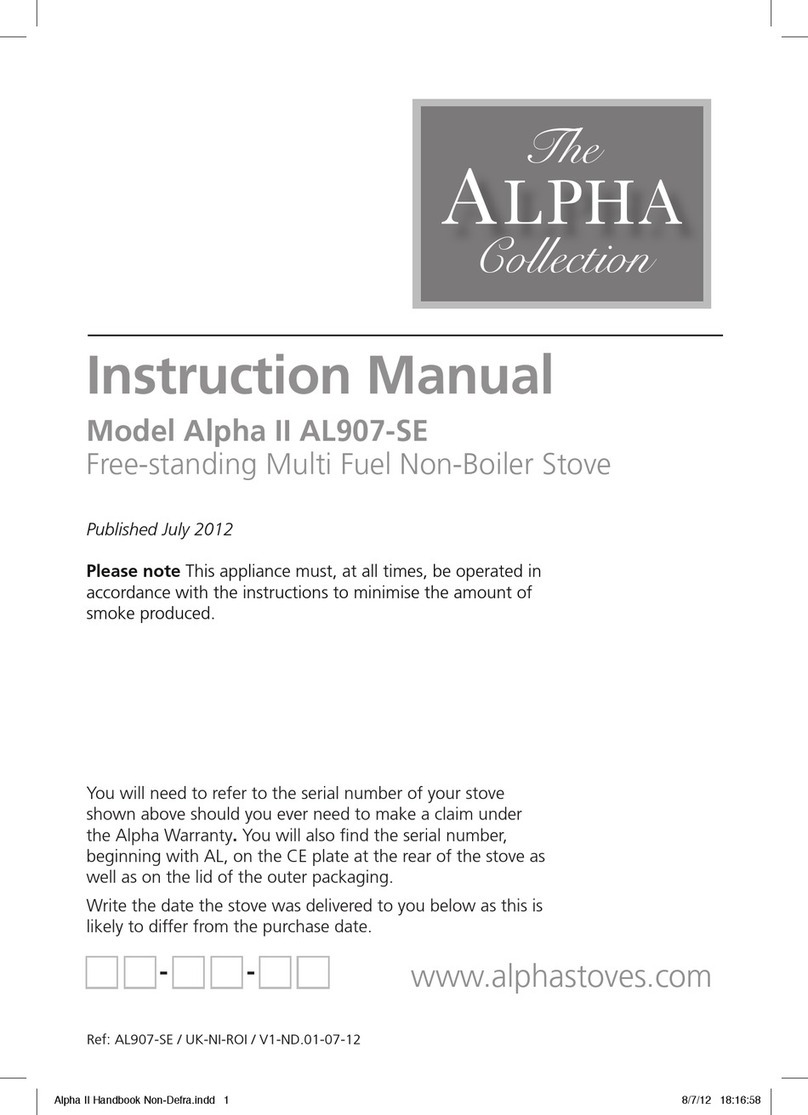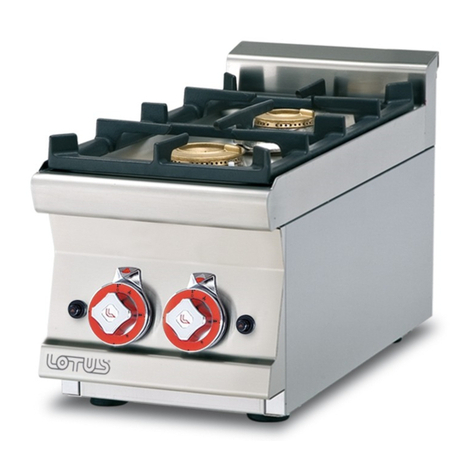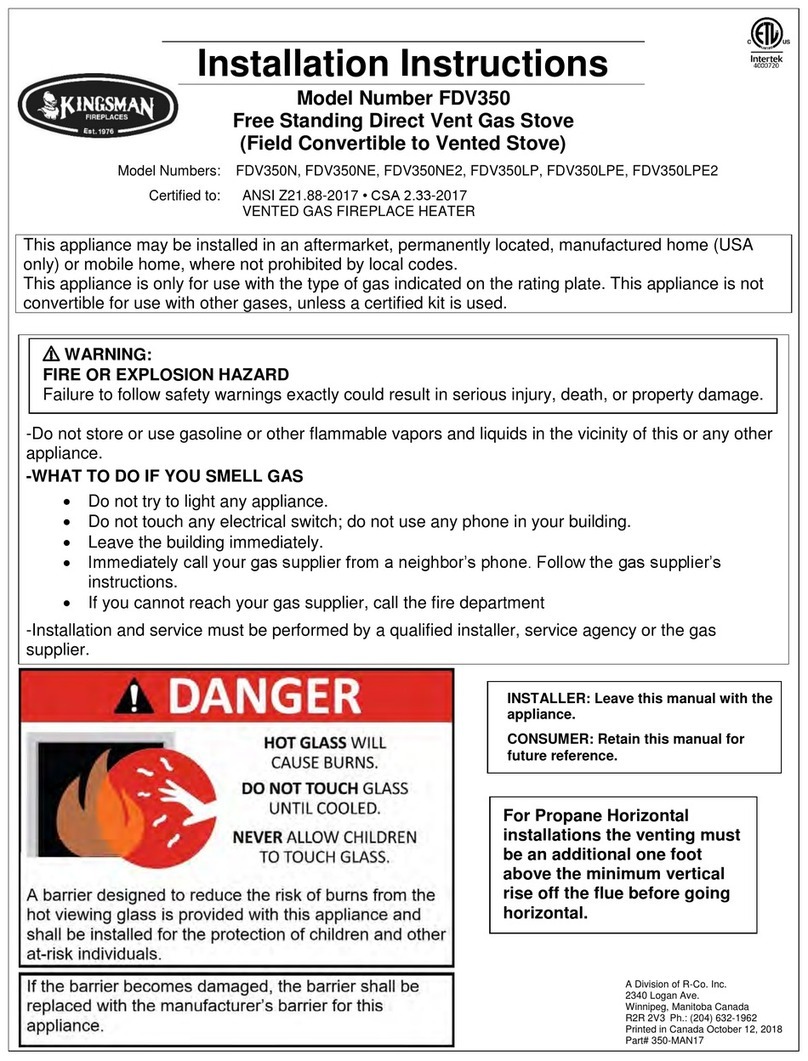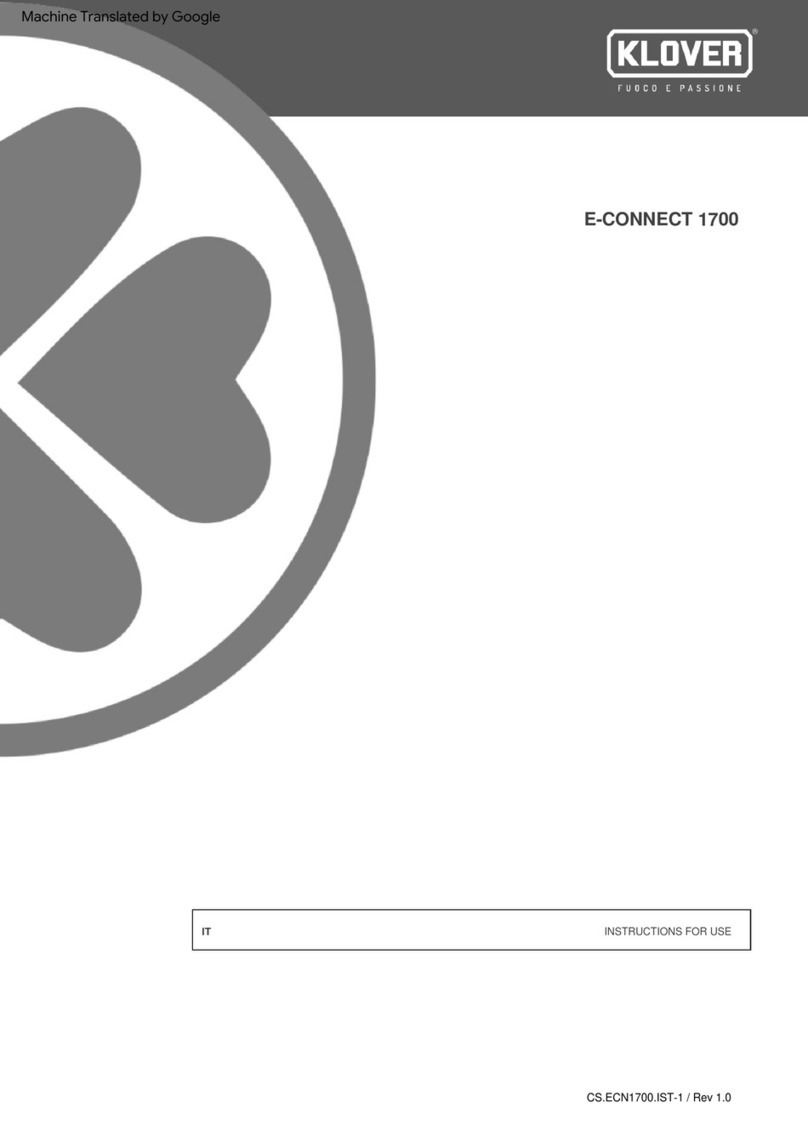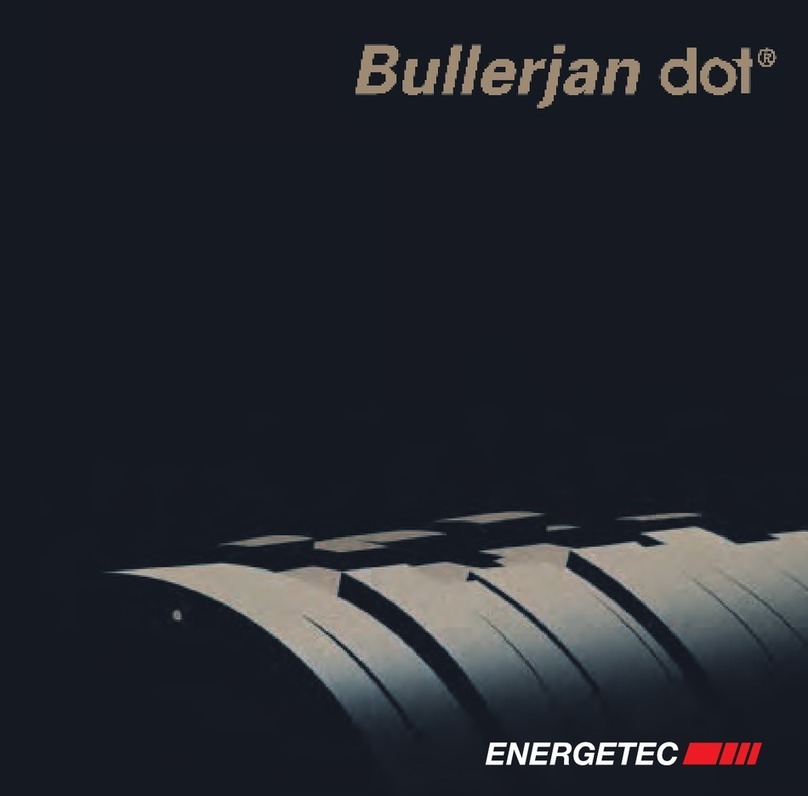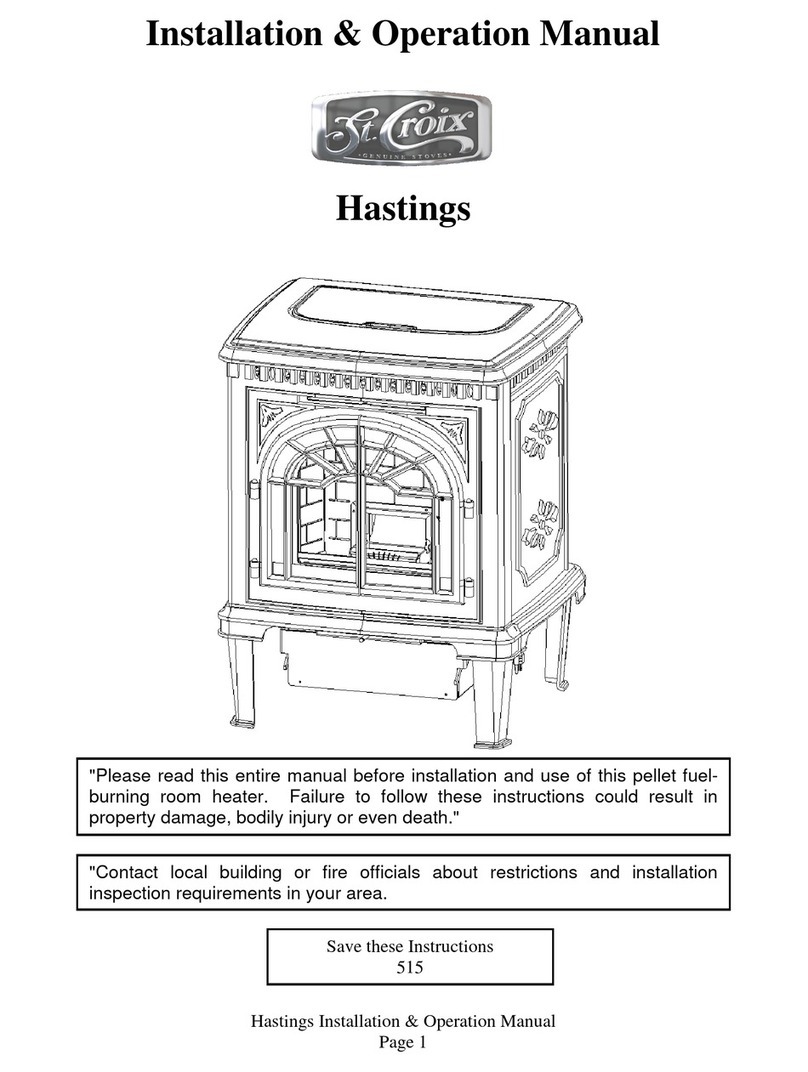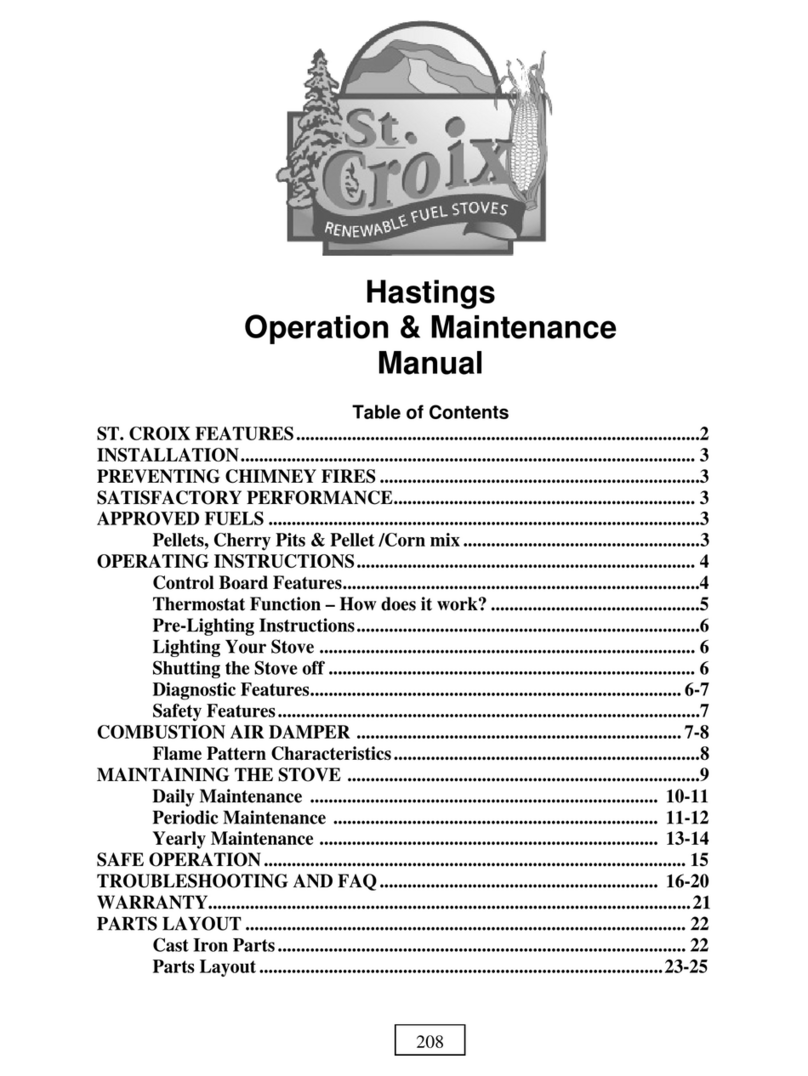
2. Lag time. This is the time it takes for the
corn to start burning and the burn pot to
become balanced. Corn will tend to stick
together in a clump in the burn pot if the corn
feeds in faster than it’s burning.
3. Overloaded burn pot. Once the corn has
formed a clump in the burn pot the pot will
overload and slowly the fire will die out.
Procedure for adjusting the damper:
a. Once the stove is burning, leave the
control board on the #1 setting for ½ an
hour. This will allow the stove to warm
up before any adjustments to the damper
are made. After ½ an hour look in the
burn pot to see if the burn pot is
balanced. Unless there weren’t enough
coals in the pot when the corn started
augering into the pot on start up the stove
should be burning fine and an adjustment
is not needed.
b. Advance the heat setting to #2 and let the
stove burn at this setting for ½ an hour.
Check the burn pot to see if it is
balanced. Most likely the stove will be
burning fine at this point, because the
damper was preset at the factory.
c. Advance the heat setting to #3 and let the
stove burn at this setting for ½ an hour.
Check the burn pot to see if it is
balanced. Remember: Look at the coals
in the pot, not at what the flame looks
like. Most likely the damper will not
need to be adjusted.
d. Advance the heat setting to #4 and let the
stove burn at this setting for ½ an hour.
Check to see if the pot is balanced. This
is where a damper adjustment might need
to be made. As the heat setting reaches
the higher settings the “Lag time” can
become too long if the air isn’t adjusted
correctly. If you notice that the coals are
being covered up with unburned corn,
adjust the damper to give it more air.
Remember: Only turn the setscrew one
½ turn clockwise to open the damper
(You might need to use a screwdriver to
break up the clump of corn in the burn pot to
allow for proper airflow). Wait 15 minutes
to see if the burn pot becomes balanced.
Repeat this step as many times as needed
until the burn pot becomes balanced.
e. Advance the heat setting to #5 and let the
stove burn at this setting for ½ an hour.
Check the burn pot to see if it is balanced A
small damper adjustment might need to be
made at this time to make sure the “Lag
time” isn’t too long. Remember: Only turn
the setscrew one1/2 turn clockwise to open
the damper. Wait 15 minutes to see if the
burn pot becomes balanced. Repeat this step
as many times as needed until the burn pot
becomes balanced.
This process will take about 3 hours, but it only
needs to be done once at the initial burn. This will
adjust the stove to the unique circumstances of your
home.
Thermostat Control.
Most corn stoves aren’t capable of using a
thermostat. This is due to the fact that corn doesn’t
react very well to sudden increases in the feed rate.
A stove that goes from a #1 setting to a #5 setting
will almost always have problems making that
transition. The burn pot will overload and the fire
will go out. The St. Croix corn stove uses a simple
time delay between each Heat setting to allow the
stove to react to the increase in corn. The stove
functions very well on a thermostat. A Milivolt type
thermostat will work with this control board.
Diagnostic Features. (Refer to Fig. 2)
There are 5 LED lights on the control board,
numbered 1 through 5 in black.
“Power Reset”. If all the lights on the control board
are lit up, and the board is unresponsive you must
unplug the stove, wait 10 seconds and plug the stove
back in and resume as normal.
“Internal Alarm”. When the control board becomes
unresponsive and the stove goes out, the control
board is in Internal Alarm. The control board has
sensed one of the Safety sensors. Allow
6
Operation and maintenance
















